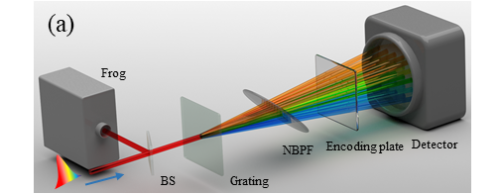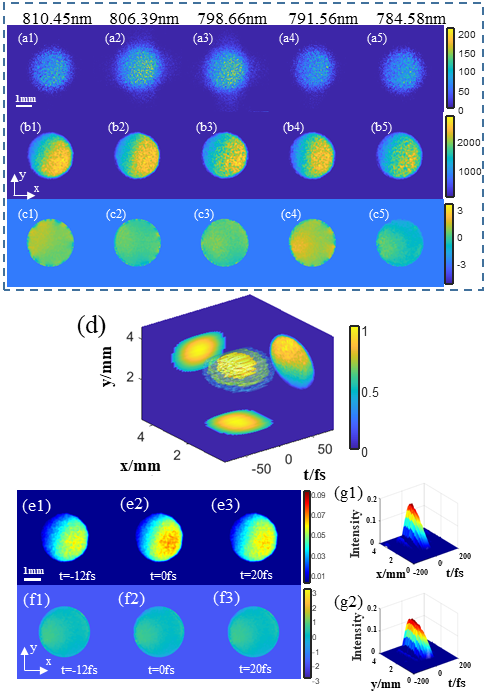The Key Laboratory of High Power Laser and Physics, Shanghai Institute of Optics and Fine Mechanics of the Chinese Academy of Sciences proposed a new scheme for the measurement of ultrashort pulse spatiotemporal coupling with single-shot. It can achieve the measurement of ultrashort pulse spatiotemporal coupling without reference pulse. The related research results were published in Optics Letters under the title of “Simple single-shot complete spatiotemporal intensity and phase measurement of an arbitrary ultrashort pulse using coherent modulation imaging” on Oct. 26, 2022.
Ultrashort pulse single-shot spatiotemporal coupling measurement can realize ultrashort pulse amplitude and phase of space-time measuring, in terms of high power laser pulse diagnosis has important application. The traditional single-shot ultrashort pulse phase measurement of time and space generally adopt the method of introducing reference pulse interference. This kind of method has complex optical path design and high requirements for environmental stability. And the spatial resolution is limited by the interference system.
To solve above problems, the researchers proposed a technology of coherent modulation imaging for the spatio-spectrum (CMISS). This technique records the encoded diffraction pattern at multiple wavelengths in single-shot. According to the diffraction pattern, the spatial phase information at different wavelengths can be obtained by using the encoded phase reconstruction algorithm. Then, combined with the spatio-temporal measurement results of FROG, the spatial information of different wavelengths can be coupled, so as to realize the spatio-temporal coupling measurement of ultra-short pulses.
In the experiment, fs pulse, amplitude-type resolution plate and phase step plate were measured with complex amplitude. The spatial resolution is 44μm and the phase measurement error is better than 0.04rad. This method does not need the reference pulse, the optical path design is simple, and theoretically can reach the spatial diffraction resolution limit of the system.
In addition, this technique has important application prospects in high-power laser single pulse diagnosis and spatiotemporal coupling measurement of complex ultrashorts.

Figure 1. CMISS optical path diagram. (Image by SIOM)

Figure 2. CMISS measurement diffraction pattern and spatiotemporal coupling measurement results. (Image by SIOM)

Figure 3. CMISS spatial amplitude and phase resolution precision measurement results. (Image by SIOM)
Article Website:
https://doi.org/10.1364/OL.469002
Contact:
WU Xiufeng
General Administrative Office
Shanghai Institute of Optics and Fine Mechanics, CAS
Email: xfwu@siom.ac.cn
Web: http://english.siom.cas.cn/